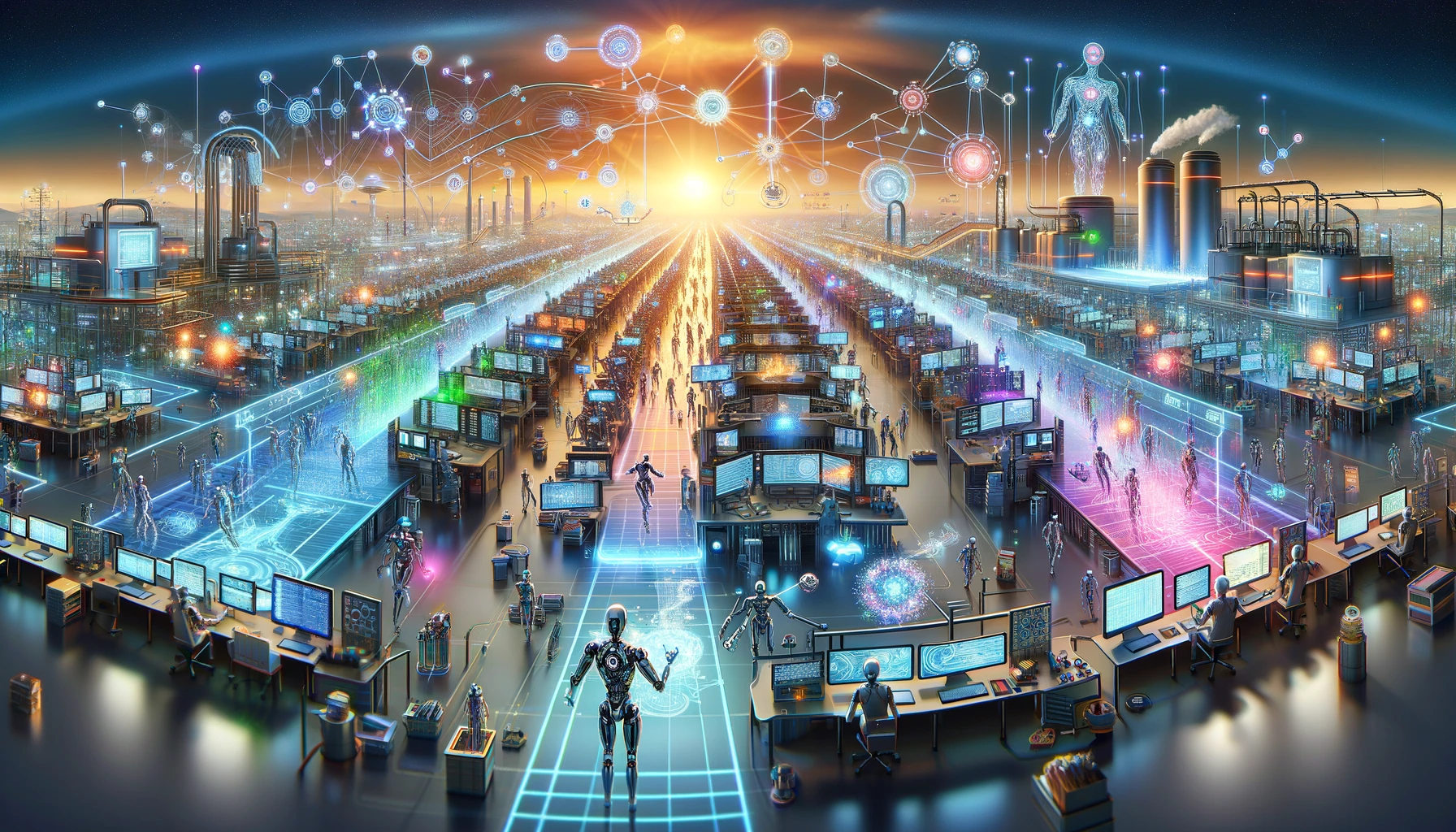Introduction
In today’s content-driven world, keeping up with the ever-growing demand for fresh, engaging content can be a daunting task. Businesses and creators alike are constantly searching for ways to streamline the content creation process while maintaining high-quality standards. This is where AI content writing emerges as a potential game-changer.
This comprehensive guide unveils the potential of AI for scalable high-quality content creation, exploring its benefits, limitations, and best practices for responsible and effective implementation.
Demystifying AI Content Writing: Unveiling Its Capabilities
AI content writing tools utilize various techniques, including natural language processing (NLP) and machine learning, to assist with content creation. These tools are trained on massive datasets of text and code, enabling them to:
- Generate different content formats: From blog posts and product descriptions to social media captions and even scripts, some AI tools can create diverse content formats tailored to your needs.
- Paraphrase and summarize existing content: AI can rephrase existing content to improve clarity and readability, or generate concise summaries of longer texts.
- Assist with research and data analysis: AI can help gather relevant information for your content by analyzing massive data sets and identifying key points and trends.
- Suggest relevant topics and keywords: AI can analyze user search queries and current trends to suggest relevant topics and keywords for your content, ensuring it aligns with audience interests and search intent.
The Power of AI: Unveiling the Benefits for Content Creators
Integrating AI into your content creation workflow offers a multitude of advantages:
- Enhanced Scalability: AI tools can significantly increase your content output, allowing you to produce a higher volume of content without compromising on quality. This is particularly beneficial for businesses or creators with tight deadlines or a need to maintain a consistent content flow.
- Improved Efficiency: AI can automate repetitive tasks such as research, keyword research, and initial content drafts, freeing up your time to focus on strategic planning, editing, and higher-level creative endeavors.
- Content Brainstorming and Idea Generation: Overcoming writer’s block and sparking new ideas can be challenging. AI can assist by suggesting relevant topics, keywords, and content outlines, igniting your creative spark and propelling the content creation process.
- Content Personalization and Customization: AI can analyze user data and preferences to personalize content for different audience segments, creating a more engaging and relevant experience. This can lead to increased user engagement, conversions, and brand loyalty.
- Multilingual Content Creation: AI-powered translation capabilities can break down language barriers and expand your reach by enabling you to generate content in multiple languages, catering to a wider global audience.
Acknowledging the Limitations: A Balanced Approach to AI-powered Content
While AI offers numerous benefits, it’s crucial to acknowledge its limitations to ensure responsible and ethical implementation:
- Lack of True Creativity and Originality: Although AI can mimic existing writing styles, it currently struggles with independent creative thinking and generating truly original ideas. Human creativity and oversight are still essential for crafting unique and engaging content.
- Accuracy and Fact-Checking: AI-generated content requires careful fact-checking and human oversight to ensure accuracy and avoid potential misinformation. It’s crucial to verify the factual accuracy of all information, especially when dealing with sensitive topics or data-driven content.
- Emotional Intelligence and Brand Voice: Capturing the nuances of human emotion and the unique voice of your brand, which are crucial for building trust and engagement, remains a challenge for AI. Human input and editing are essential to ensure your content resonates with your audience and reflects your brand identity.
Harnessing the Potential: Best Practices for Responsible AI Use
To maximize the benefits and mitigate the limitations of AI content writing, consider these best practices:
- Clearly define your content goals and target audience: Understanding your objectives and who you are creating content for will guide your AI tool selection and ensure the generated content aligns with your needs.
- Choose the right AI tool: Different AI tools offer varying features and functionalities. Evaluate your needs and select a tool that best suits your content creation requirements and budget.
- Provide clear instructions and prompts: When using AI tools, provide clear instructions and prompts to guide the content generation process and ensure the output aligns with your desired style and tone.
- Fact-check and edit rigorously: Always fact-check and edit AI-generated content thoroughly to ensure accuracy, clarity, and adherence to your brand voice and style.
- Maintain human oversight and control: Remember, AI is a tool, not a replacement for human creativity and expertise. Maintain human oversight throughout the content creation process for strategic direction, quality control, and ethical considerations.
Conclusion: A Collaborative Future for Content Creation
AI content writing is not a magic bullet, but it offers a powerful tool for content creators and businesses seeking to scale their content production efficiently while maintaining quality. By understanding its capabilities, limitations, and best practices for responsible use, you can leverage AI to:
- Boost your content output: Produce more content without compromising on quality, allowing you to cater to a wider audience and establish a stronger online presence.
- Streamline your workflow: Free up valuable time by delegating repetitive tasks to AI, allowing you to focus on higher-level creative endeavors and strategic planning.
- Enhance content quality: Utilize AI for research, fact-checking, and initial drafts, then apply your human expertise to edit, refine, and inject your unique voice and brand personality.
- Explore new content formats: Experiment with AI-powered content formats like interactive content or personalized content experiences to engage your audience in new and innovative ways.
Remember, the future of content creation lies in collaboration. By embracing AI as a valuable tool and maintaining human oversight, you can harness its potential to unlock new levels of creativity, efficiency, and scalability in your content creation journey. As AI technology continues to evolve, we can expect even more exciting possibilities for crafting high-quality content that resonates with audiences and drives business success.






